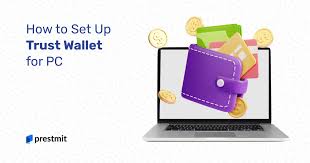
To start investing in Trust Wallet, download the app, create a wallet, deposit crypto, and explore DeFi or staking opportunities.
Setting Up Your Trust Wallet Account
Downloading and Installing Trust Wallet
-
Download from Official Sources: To ensure you are getting the legitimate version, download Trust Wallet directly from the official website or app stores—Google Play for Android users and the Apple App Store for iOS users.
-
System Requirements: Ensure your device meets the minimum system requirements for Trust Wallet, which includes Android 5.0+ or iOS 10.0+.
-
Installation Process: Once downloaded, open the app and follow the on-screen instructions to install it on your device. The app is free to install and requires minimal space.
Creating Your Wallet and Backing Up Your Keys
-
Creating a New Wallet: After installing the app, open Trust Wallet and select “Create a New Wallet” to begin the setup process. You will be prompted to create a secure password for additional protection.
-
Backup Your Recovery Phrase: Trust Wallet will generate a 12-word recovery phrase. This is critical for wallet recovery if you lose access to your phone. Write it down securely and store it offline—do not share it with anyone.
-
Secure Your Wallet: Set up additional security features like biometrics or PIN code for quick access. Ensure your device’s security settings (fingerprint, face ID) are also enabled to enhance wallet protection.
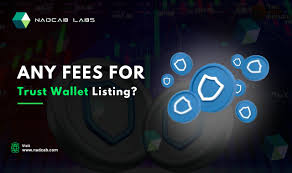
Understanding the Basics of Cryptocurrency Investment
What Types of Cryptocurrencies Can You Invest In?
-
Bitcoin (BTC): As the first and most well-known cryptocurrency, Bitcoin is often seen as a stable investment within the crypto space. It is widely accepted and considered a store of value.
-
Ethereum (ETH): Known for its smart contract capabilities, Ethereum is essential for DeFi projects and decentralized applications (DApps), making it a popular choice for investors.
-
Stablecoins: These are cryptocurrencies pegged to stable assets like the US dollar, such as Tether (USDT) or USD Coin (USDC), offering less volatility compared to other crypto assets.
-
Altcoins: These include other cryptocurrencies like Binance Coin (BNB), Cardano (ADA), and Solana (SOL), each offering unique features and use cases.
-
Tokens for DeFi and NFTs: Decentralized Finance (DeFi) tokens like Uniswap (UNI) or Aave (AAVE) and Non-Fungible Token (NFT) platforms such as Flow (FLOW) or Decentraland (MANA) present innovative investment opportunities.
How to Choose the Right Assets for Your Portfolio
-
Research the Project: Thoroughly research the project behind the cryptocurrency. Look into its team, use case, roadmap, and market potential. Ensure it solves a real-world problem and has strong community support.
-
Risk Tolerance: Assess your own risk tolerance. Established cryptocurrencies like Bitcoin and Ethereum are typically less volatile than newer altcoins, which may offer higher returns but come with increased risk.
-
Diversification: Diversify your portfolio to reduce risk. Don’t focus on just one cryptocurrency—spread your investments across different assets to balance potential gains and losses.
-
Long-Term vs Short-Term: Decide whether you’re investing for the long-term or looking for short-term gains. Long-term investors may prefer more stable coins, while short-term traders may focus on high volatility assets.
-
Monitor the Market: Stay updated with cryptocurrency market trends, news, and regulations. The market can change rapidly, and staying informed helps you make better investment decisions.
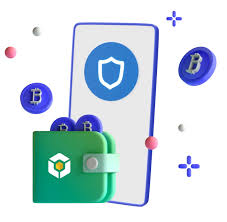
Adding Funds to Your Trust Wallet
How to Deposit Crypto into Your Trust Wallet
-
Receiving Cryptocurrency: To deposit crypto, open Trust Wallet and select the cryptocurrency you want to receive (e.g., Bitcoin, Ethereum). Tap “Receive,” and you’ll be provided with a unique wallet address.
-
Sending Crypto from Another Wallet or Exchange: Copy the wallet address from Trust Wallet and paste it into the recipient address field on the platform from where you’re sending the crypto (such as another wallet or a cryptocurrency exchange).
-
Transaction Confirmation: Once the transaction is sent, you can track its progress on Trust Wallet. The deposit will be completed once the blockchain network confirms the transaction.
Using Fiat to Buy Cryptocurrency in Trust Wallet
-
Connecting a Payment Method: To buy crypto with fiat (e.g., USD, EUR), you can link your payment method via third-party services like Simplex or MoonPay integrated into Trust Wallet.
-
Selecting Your Cryptocurrency: Choose the cryptocurrency you wish to purchase. Trust Wallet offers a wide variety of options including Bitcoin, Ethereum, and others.
-
Completing the Purchase: Enter the fiat amount you want to spend, confirm the transaction, and make the payment using your preferred method (credit card, bank transfer, etc.). The purchased crypto will be sent directly to your Trust Wallet.
-
Verifying the Transaction: After purchasing, you can view your newly acquired crypto in your Trust Wallet balance, and the transaction will be reflected immediately.
Exploring the Features of Trust Wallet for Investors
Managing Multiple Cryptocurrencies with Ease
-
Multi-Currency Support: Trust Wallet allows you to store, send, and receive a wide range of cryptocurrencies, including Bitcoin, Ethereum, Binance Coin (BNB), and many other tokens. This feature simplifies managing different assets in one place.
-
Unified Portfolio: With Trust Wallet, you can track all your crypto holdings in one unified portfolio. The wallet automatically detects new tokens added to your account and updates your balance accordingly.
-
Custom Token Addition: If Trust Wallet doesn’t automatically show a particular token, you can manually add custom tokens using their contract address, making it flexible for investors holding lesser-known or niche cryptocurrencies.
Using Trust Wallet for DeFi and DApps Interaction
-
DeFi Integration: Trust Wallet offers easy access to decentralized finance (DeFi) platforms. You can participate in lending, borrowing, staking, and yield farming directly from the wallet.
-
DApp Browser: The built-in DApp browser allows you to interact with decentralized applications (DApps) across various blockchain networks, including Ethereum, Binance Smart Chain, and others.
-
Staking Cryptocurrencies: Trust Wallet supports staking of supported cryptocurrencies like BNB, Tezos (XTZ), and Cosmos (ATOM), allowing you to earn rewards while keeping your assets in the wallet.
-
NFT Support: Trust Wallet allows you to manage Non-Fungible Tokens (NFTs) by connecting with NFT marketplaces like OpenSea and Rarible, enabling easy buying, selling, and storing of NFTs directly within the wallet.
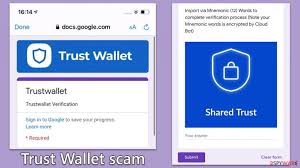
How to Invest in Decentralized Finance (DeFi) with Trust Wallet
Understanding DeFi and Its Benefits
-
What is DeFi?: Decentralized Finance (DeFi) refers to financial services that are built on blockchain technology, allowing users to access financial products without relying on traditional financial institutions like banks. DeFi operates through smart contracts, offering transparency and efficiency.
-
Benefits of DeFi: DeFi allows for lower fees, greater transparency, enhanced security, and global access to financial services. It provides users with the ability to borrow, lend, trade, and earn interest without the need for intermediaries, making it an attractive option for investors.
-
Access to High-Yield Opportunities: DeFi platforms offer lucrative earning opportunities such as yield farming, liquidity provision, and staking, which can generate higher returns than traditional financial systems.
Step-by-Step Guide to Investing in DeFi Projects
-
Set Up Trust Wallet: If you haven’t already, install Trust Wallet and ensure it is backed up with a secure recovery phrase. This will give you control over your private keys and access to DeFi platforms.
-
Deposit Cryptocurrency: Deposit crypto into your Trust Wallet by transferring assets from an exchange or another wallet. Popular cryptocurrencies for DeFi investments include Ethereum (ETH), Binance Coin (BNB), and stablecoins like USDT.
-
Access DeFi Platforms: Use the built-in DApp browser in Trust Wallet to access DeFi platforms like Uniswap, Compound, or Aave. These platforms offer lending, borrowing, and liquidity farming opportunities.
-
Choose a DeFi Project: Research and select a DeFi project that aligns with your investment goals. Look for platforms with strong security, a proven track record, and liquidity.
-
Invest in DeFi: Once you’ve chosen a project, connect your Trust Wallet to the platform. Depending on the platform, you may need to approve a transaction to provide liquidity, stake tokens, or participate in lending/borrowing.
-
Monitor Your Investment: Keep track of your investments through Trust Wallet, ensuring you stay updated on the performance of your DeFi assets. You can also earn interest or rewards by participating in the project’s governance or liquidity pools.
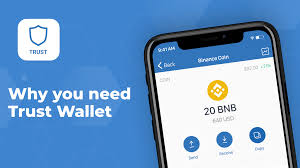
Safety and Security in Trust Wallet
How to Keep Your Private Keys Safe
-
Backup Your Recovery Phrase: When setting up your Trust Wallet, you’ll receive a 12-word recovery phrase. Write it down and store it in a secure, offline location, such as a safe. Never share it with anyone.
-
Avoid Storing on Digital Devices: Never store your recovery phrase or private keys on digital devices like your phone or computer, as these can be hacked. Use physical storage methods like paper or hardware wallets for added security.
-
Use Strong Passwords: Ensure that your Trust Wallet app is secured with a strong password or PIN. This will add an additional layer of security in case your phone is lost or stolen.
Setting Up Two-Factor Authentication for Extra Protection
-
Enable Two-Factor Authentication (2FA) on Linked Accounts: Although Trust Wallet is a non-custodial wallet and doesn’t require 2FA directly, you should enable 2FA on any exchange accounts you link with Trust Wallet, such as Binance or Coinbase.
-
Use Authenticator Apps: Set up 2FA using an authenticator app (e.g., Google Authenticator or Authy) to add an extra layer of protection when accessing your exchange accounts. This ensures that even if your password is compromised, an attacker cannot access your funds without the 2FA code.
-
Regularly Monitor for Suspicious Activity: Periodically check your wallet and exchange accounts for any unauthorized transactions. This can help you quickly detect any security breaches and take action.
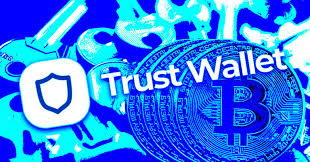
Tracking Your Investments in Trust Wallet
Monitoring Portfolio Performance
-
Unified Dashboard: Trust Wallet provides a simple, unified dashboard where you can view all your holdings in various cryptocurrencies. This allows you to easily track the value of your portfolio over time.
-
Real-Time Market Data: Trust Wallet integrates with external data providers to give you real-time market prices, ensuring you stay up-to-date with the latest changes in the value of your assets.
-
Portfolio Value: Trust Wallet automatically updates the value of your assets based on current market prices, helping you assess your overall portfolio performance with minimal effort.
Using Trust Wallet’s Built-in Tools for Investment Insights
-
Transaction History: Trust Wallet offers a detailed transaction history, showing the details of each deposit, withdrawal, and trade. This can help you track your investment performance and identify any trends in your portfolio.
-
Gas Fee Tracker: To help with decision-making when making transfers, Trust Wallet shows the current gas fees, allowing you to time your transactions more effectively and reduce unnecessary costs.
-
DeFi and Staking Insights: If you’re involved in DeFi projects or staking, Trust Wallet provides detailed information on your staked assets, rewards, and DeFi yield, offering insights into the performance of your investments in these areas.
How do I deposit cryptocurrency into Trust Wallet?
To deposit crypto, simply copy your Trust Wallet address, then send the cryptocurrency from another wallet or exchange to that address.
Can I buy cryptocurrency directly in Trust Wallet?
Yes, you can buy crypto with fiat currency using third-party services like Simplex or MoonPay integrated within Trust Wallet.
How do I participate in DeFi with Trust Wallet?
Use the built-in DApp browser in Trust Wallet to access DeFi platforms, allowing you to stake, lend, or borrow crypto directly from the app.
Leave a Reply